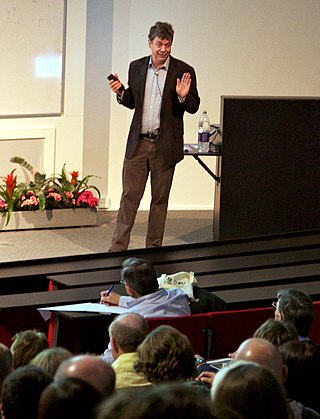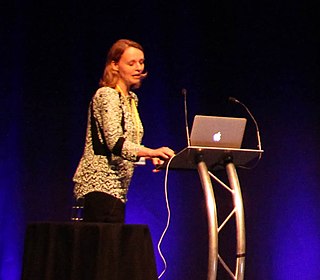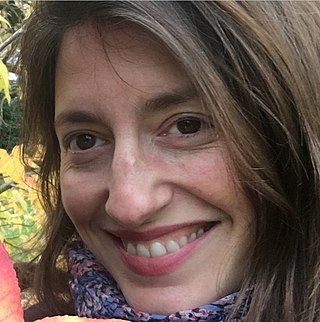
The Big Bang is a physical theory that describes how the universe expanded from an initial state of high density and temperature. The Big Bang theory was inspired by the discovery of the expanding Universe by Edwin Hubble. It was first proposed in 1927 by Roman Catholic priest and physicist Georges Lemaître. Lemaître reasoned that if we go back in time, there must be fewer and fewer matter, until all the energy of the universe is packed in a unique quantum. Various cosmological models of the Big Bang explain the evolution of the observable universe from the earliest known periods through its subsequent large-scale form. These models offer a comprehensive explanation for a broad range of observed phenomena, including the abundance of light elements, the cosmic microwave background (CMB) radiation, and large-scale structure. The overall uniformity of the universe, known as the flatness problem, is explained through cosmic inflation: a sudden and very rapid expansion of space during the earliest moments. However, physics currently lacks a widely accepted theory of quantum gravity that can successfully model the earliest conditions of the Big Bang.

Physical cosmology is a branch of cosmology concerned with the study of cosmological models. A cosmological model, or simply cosmology, provides a description of the largest-scale structures and dynamics of the universe and allows study of fundamental questions about its origin, structure, evolution, and ultimate fate. Cosmology as a science originated with the Copernican principle, which implies that celestial bodies obey identical physical laws to those on Earth, and Newtonian mechanics, which first allowed those physical laws to be understood.
In physical cosmology, cosmic inflation, cosmological inflation, or just inflation, is a theory of exponential expansion of space in the early universe. The inflationary epoch is believed to have lasted from 10−36 seconds to between 10−33 and 10−32 seconds after the Big Bang. Following the inflationary period, the universe continued to expand, but at a slower rate. The acceleration of this expansion due to dark energy began after the universe was already over 7.7 billion years old.
In astronomy, dark matter is a hypothetical form of matter that appears not to interact with light or the electromagnetic field. Dark matter is implied by gravitational effects which cannot be explained by general relativity unless more matter is present than can be seen. Such effects occur in the context of formation and evolution of galaxies, gravitational lensing, the observable universe's current structure, mass position in galactic collisions, the motion of galaxies within galaxy clusters, and cosmic microwave background anisotropies.
Weakly interacting massive particles (WIMPs) are hypothetical particles that are one of the proposed candidates for dark matter.

Astrophysics is a science that employs the methods and principles of physics and chemistry in the study of astronomical objects and phenomena. As one of the founders of the discipline, James Keeler, said, Astrophysics "seeks to ascertain the nature of the heavenly bodies, rather than their positions or motions in space–what they are, rather than where they are." Among the subjects studied are the Sun, other stars, galaxies, extrasolar planets, the interstellar medium and the cosmic microwave background. Emissions from these objects are examined across all parts of the electromagnetic spectrum, and the properties examined include luminosity, density, temperature, and chemical composition. Because astrophysics is a very broad subject, astrophysicists apply concepts and methods from many disciplines of physics, including classical mechanics, electromagnetism, statistical mechanics, thermodynamics, quantum mechanics, relativity, nuclear and particle physics, and atomic and molecular physics.
The Lambda-CDM, Lambda cold dark matter, or ΛCDM model is a mathematical model of the Big Bang theory with three major components:
- a cosmological constant denoted by lambda (Λ) associated with dark energy
- the postulated cold dark matter
- ordinary matter
A dark star is a hypothetical type of star that may have existed early in the universe before conventional stars were able to form and thrive.

Simon David Manton White, FRS, is a British astrophysicist. He was one of directors at the Max Planck Institute for Astrophysics before his retirement in late 2019.
The chronology of the universe describes the history and future of the universe according to Big Bang cosmology.
Manfred Lindner is a German physicist and director at the Max Planck Institute for Nuclear Physics in Heidelberg, Germany. He conducts basic research in particle and astro-particle physics.

Hiranya Vajramani Peiris is a British astrophysicist at the University of Cambridge, where she holds the Professorship of Astrophysics (1909). She is best known for her work on the cosmic microwave background radiation, and interdisciplinary links between cosmology and high-energy physics. She was one of 27 scientists who received the Breakthrough Prize in Fundamental Physics in 2018 for their "detailed maps of the early universe."

Joanna Dunkley is a British astrophysicist and Professor of Physics at Princeton University. She works on the origin of the Universe and the Cosmic microwave background (CMB) using the Atacama Cosmology Telescope, the Simons Observatory and the Large Synoptic Survey Telescope (LSST).

Tsutomu Yanagida is a Japanese physicist who first proposed the seesaw mechanism in 1979 and developed the model of leptogenesis. The name of the seesaw mechanism was given by him in a Tokyo conference in 1981. In 1994, he predicted, together with M. Fukugita, the nonzero cosmological constant Λ = (3 ± 1 meV)4 four years prior to the observation in order to resolve the age discrepancy between the Universe and some old stars.
Shirley Ho is an American astrophysicist and machine learning expert, currently at the Center for Computational Astrophysics at Flatiron Institute in NYC and at the New York University and the Carnegie Mellon University. Ho also has visiting appointment at Princeton University.

Jocelyn Monroe is an American British experimental particle physicist who is a professor at the University of Oxford. Her research considers the development of novel detectors as part of the search for dark matter. In 2016 she was honoured with the Breakthrough Prize in Fundamental Physics for her work on the Sudbury Neutrino Observatory.
Cora Dvorkin is an Argentine physicist, who is a professor at the physics department at Harvard University. Dvorkin is a theoretical cosmologist. Her areas of research are: the nature of dark matter, neutrinos and other light relics, and the physics of the early universe. Dvorkin is the Harvard Representative at the newly NSF-funded Institute for Artificial Intelligence and Fundamental Interactions (IAIFI)'s Board. In 2022, she was voted “favorite professor” by the Harvard senior Class of 2023. She has been awarded the 2019 DOE Early Career award and has been named the "2018 Scientist of the year" by the Harvard Foundation for "Salient Contributions to Physics, Cosmology and STEM Education". She has also been awarded a Radcliffe Institute Fellowship and a Shutzer Professorship at the Radcliffe Institute. In 2018 she was awarded a Star Family Challenge prize for Promising Scientific Research, which supports high-risk, high-impact scientific research at Harvard. In 2020, Dvorkin gave a talk on machine learning applied to the search for dark matter as part of the TEDx Río de la Plata event.
Irene Tamborra is the Italian particle astrophysicist, specializing in the areas of neutrino astrophysics and cosmology as well as multi-messenger astronomy. She is professor of particle astrophysics at the Niels Bohr Institute, University of Copenhagen.
Nicole F. Bell is an Australian physicist who is a professor at the University of Melbourne. She is a theoretical physicist who works on dark matter, neutrino physics, and other topics in particle and astroparticle theory.
Direct detection of dark matter is the science of attempting to directly measure dark matter collisions in Earth-based experiments. Modern astrophysical measurements, such as from the Cosmic Microwave Background, strongly indicate that 85% of the matter content of the universe is unaccounted for. Although the existence of dark matter is widely believed, what form it takes or its precise properties has never been determined. There are three main avenues of research to detect dark matter: attempts to make dark matter in accelerators, indirect detection of dark matter annihilation, and direct detection of dark matter in terrestrial labs. The founding principle of direct dark matter detection is that since dark matter is known to exist in the local universe, as the Earth, Solar System, and the Milky Way Galaxy carve out a path through the universe they must intercept dark matter, regardless of what form it takes.







